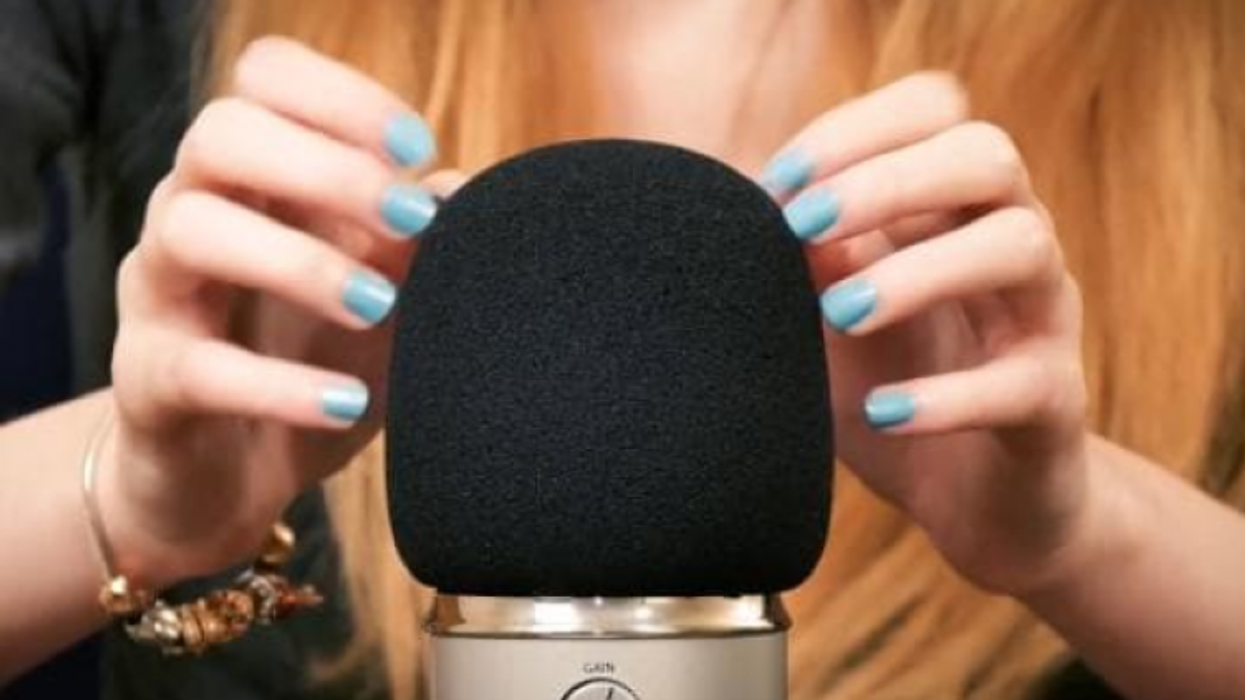We Asked a Scientist to Explain the Truth Behind At-Home DNA Kits
Ever wonder why things are the way they are? Welcome to Ask a Scientist. As a former teacher with a Ph.D. in Social-Personality Psychology, I have a passion for understanding and explaining trending topics in psychology and beyond, including attitudes, mood, social cognition, evolutionary psychology, and mental health. I’ve worked as a counselor in a maximum security jail, a researcher for the Department of National Defence, and as a teacher in North America and overseas and I’m hungry to take on your most curious everyday inquiries. You’ve probably heard of at-home ancestry tests offered by companies like 23andMe and Ancestry.com. Maybe you even know someone who has sent away their cheek swabs as genetic samples and received information on their heritage. It might come as a surprise, though, to learn that the latest wave of testing services offers to connect your genes to some fairly unexpected areas, including your optimal wine preferences, dating recommendations, Spotify playlists, and skin care strategies. While these highly customized profiles are fun and fascinating, one area that likely holds broader appeal is the relationship between genetics and health. Healthy DNA, Healthy Life? Health is wealth, they say, and for some companies the connection is particularly important. Take, for example, 23andMe, who received U.S. Food and Drug Administration approval in 2017 to sell direct-to-consumer kits that provide genetic risk information for ten diseases or conditions, including Parkinson’s disease, early-onset Alzheimer’s disease, and Celiac disease. In March of 2018, the company was cleared by the FDA to sell kits that screen for cancer risk. The kits specifically test for three mutations of the BRCA1 and BRCA2 genes associated with elevated risk for breast cancer, as well as ovarian, prostate, and pancreatic cancer. Back in 2013, however, 23andMe was ordered to stop selling its Personal Genome Service kits over issues with accuracy and interpretation. While FDA guidelines specified that health-related genetic profiles be considered for “Research Use Only,” the reality was that people were all too likely to view their results as diagnostic tests, inflating the potential fallout of false positives and false negatives. This was new territory for the company, the FDA, and especially for consumers. The ABCs of DNA Genetic science is fascinating, but using DNA to address even simple genealogical questions is difficult. Just watch a few YouTube testimonial videos to get a sense of the confusion that results when, for example, someone receives varying results from different companies -- something that happens simply because different companies examine different portions of the genome. Whether it’s actually a case of too much information or too little understanding, it’s easy to imagine how adding genetic details about health and disease could muddy the picture. This is partly what drove the FDA’s initial prohibition: the idea that our respect for science outweighs our actual understanding of science, and that we could consequently see our genetic profiles as a replacement professional medical advice. The Future of Us Of course, the desire to understand ourselves is only natural, and for many people this includes access to genetic health information; however, health is very complicated, and critics argue that the problem with such genetic disease risk information is that it is only part of the overall picture -- DNA is not destiny, and lifestyle factors like health and exercise also play an important role. Moreover, home testing kits are, after all, only another test, and no test is perfect. Thus, even “good” results that indicate no or low risk could be a false negative. Sites like Ancestry.com explain that even their genetic heritage data are only estimates, and savvy consumers should be ready to qualify health data in the same way. These are still early days for genetic science, and as the technology improves so hopefully will our general understanding of it. Whether its applications are a small stepping stone toward improved health care, the tip of another iceberg of disruptive technology, or something else entirely, remains to be seen.
You’ve Seen It All over YouTube and Netflix but What Is ASMR?
Ever wonder why things are the way they are? Welcome to Ask a Scientist. As a former teacher with a Ph.D. in Social-Personality Psychology, I have a passion for understanding and explaining trending topics in psychology and beyond, including attitudes, mood, social cognition, evolutionary psychology, and mental health. I’ve worked as a counselor in a maximum security jail, a researcher for the Department of National Defence, and as a teacher in North America and overseas and I’m hungry to take on your most curious everyday inquiries. You’ve seen it all over YouTube and Netflix but what is ASMR? Is there anything behind the strangely comforting whispers of strangers recording themselves for social media? Autonomous Sensory Meridian Response, or ASMR, refers to a perceptual phenomenon in which specific audio and visual stimuli cause some people to experience pleasurable tingling sensations, positive emotions, and a sense of relaxation. People who experience ASMR describe a sensation that begins in the scalp and travels down the neck and back, like you might feel if someone lightly touched your skin. Although in this case, the triggers that cause the reaction are typically close-up videos of people whispering, performing deliberate tasks, or paying close personal attention to the viewer. If you’re intrigued by the world of ASMR, you’re definitely not alone. In fact, being curious might actually indicate that you’re more likely to experience ASMR. You're Not Alone The term ASMR was coined in 2010 by Jennifer Allen, an early contributor to online discussions of the phenomenon who would go on to create the Facebook ASMR Group and the website ASMR Research. She was happy to find that others experienced something similar to her “strange occurrence,” as she called it, but saw a need for a shared vocabulary that would foster communication. With that goal in mind, she chose a term that aimed to capture a sensitive, subjective experience. What's in a Name? The choice of words stuck, and, in the span of less than a decade, a growing community of ASMR fans and content creators, or ASMRtists, has emerged. One can now find millions of YouTube videos of ASMR devotees producing an incredible range of sights and sounds designed to trigger what some call a “braingasm.” While it might sound unusual to imagine watching a video of someone licking an ear-shaped plastic microphone or pouring a bag of lollipops into an industrial shredder, consider that the more popular ASMR videos on YouTube rack up view counts in the tens of millions. Even Netflix recently explored the trend in their “Follow This” documentary series, where they profiled one of one of the most followed YouTube ASMRtists, Maria, whose channel “Gentle Whispering ASMR” currently has over 1.4 million subscribers. Who's Watching? A survey of research publications, online discussions, and video viewer comments reveals that people watch ASMR videos generally as a way to relax and fight stress. Some viewers say the videos help them disconnect and temporarily tune out reality, while others speak of the opportunity to make a connection without risking vulnerability. Just Curious If you want to experience ASMR, it might help to have the right frame of mind. A recent study showed that the phenomenon is more common in people who are naturally curious about their own consciousness and who tend to think mindfully, that is, with nonjudgmental awareness and self-regulation of attention and emotions. In this study, ASMR was specifically related to a facet of mindfulness based on deliberately observing one’s bodily sensations, suggesting that the phenomenon is not an automatic response to stimuli but a cognitively active process related to being “mindfully curious.” These researchers speculated that mindfulness training could facilitate an enhanced ASMR experience. The ASMR Personality Related research has found that individuals who experience ASMR score higher than control participants on measures of Neuroticism and Openness to Experience, and that these two personality traits also predicted a more intense ASMR experience. These connections can help us understand the personal basis for the ASMR experience, in that Openness to Experience is tied to curiosity, fantasy, daydreams, and an interest in art and aesthetics. On the other hand, Neuroticism is related to anxiety, depression, and self-consciousness. Thus the connection between ASMR and Neuroticism may lie partly in greater self-consciousness of bodily sensations, and partly in a tendency to experience negative emotions. This aspect of the ASMR community is emphasized in the Netflix special, where several individuals mention depression and stress, as well as in related research that has shown that ASMR led to temporary improvements for participants with depression as well as those with chronic pain.














